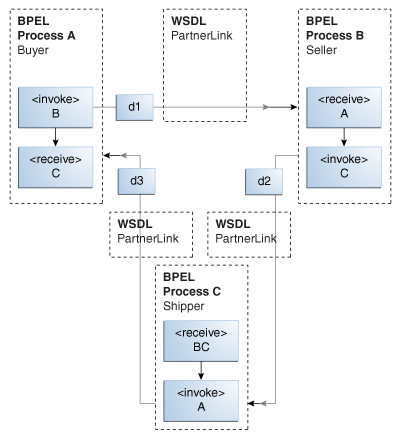Introduction to Multiple Application Interactions
In some cases, there are more than two applications involved in a transaction, for example, a buyer, seller, and shipper. In this case, the buyer sends a request to the seller, the seller sends a request to the shipper, and the shipper sends a notification to the buyer. This A-to-B-to-C-to-A transaction pattern can handle many transactions at the same time. Therefore, a mechanism is required for keeping track of which message goes where. Figure 5-10 provides an overview.
As with all partner activities, the WSDL file defines the interaction.
This kind of coordination can be managed using WS-Addressing or correlation sets. For more information about both, see Invoking an Asynchronous Web Service from a BPEL Process.
